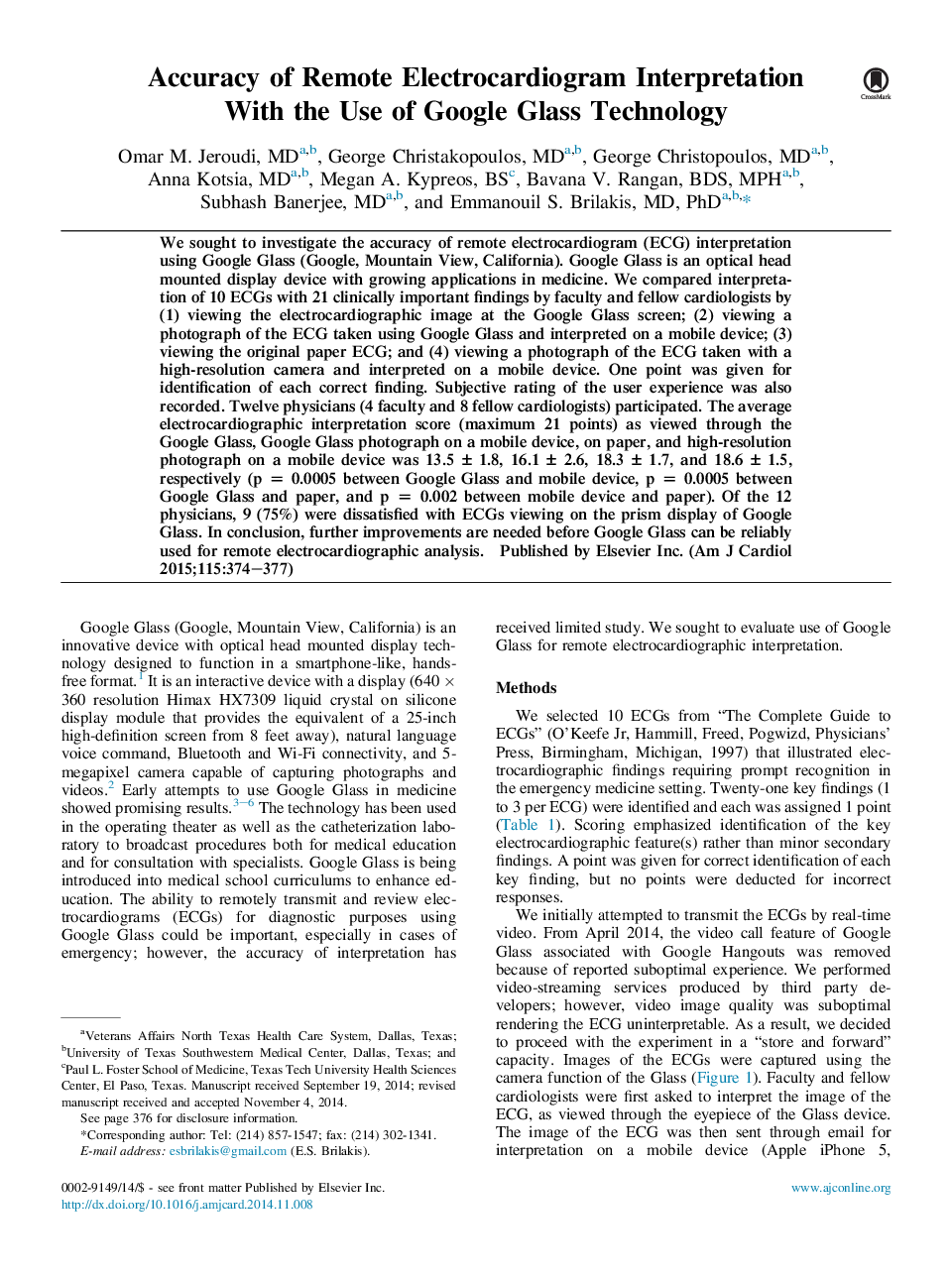| Article ID | Journal | Published Year | Pages | File Type |
|---|---|---|---|---|
| 2853595 | The American Journal of Cardiology | 2015 | 4 Pages |
We sought to investigate the accuracy of remote electrocardiogram (ECG) interpretation using Google Glass (Google, Mountain View, California). Google Glass is an optical head mounted display device with growing applications in medicine. We compared interpretation of 10 ECGs with 21 clinically important findings by faculty and fellow cardiologists by (1) viewing the electrocardiographic image at the Google Glass screen; (2) viewing a photograph of the ECG taken using Google Glass and interpreted on a mobile device; (3) viewing the original paper ECG; and (4) viewing a photograph of the ECG taken with a high-resolution camera and interpreted on a mobile device. One point was given for identification of each correct finding. Subjective rating of the user experience was also recorded. Twelve physicians (4 faculty and 8 fellow cardiologists) participated. The average electrocardiographic interpretation score (maximum 21 points) as viewed through the Google Glass, Google Glass photograph on a mobile device, on paper, and high-resolution photograph on a mobile device was 13.5 ± 1.8, 16.1 ± 2.6, 18.3 ± 1.7, and 18.6 ± 1.5, respectively (p = 0.0005 between Google Glass and mobile device, p = 0.0005 between Google Glass and paper, and p = 0.002 between mobile device and paper). Of the 12 physicians, 9 (75%) were dissatisfied with ECGs viewing on the prism display of Google Glass. In conclusion, further improvements are needed before Google Glass can be reliably used for remote electrocardiographic analysis.
